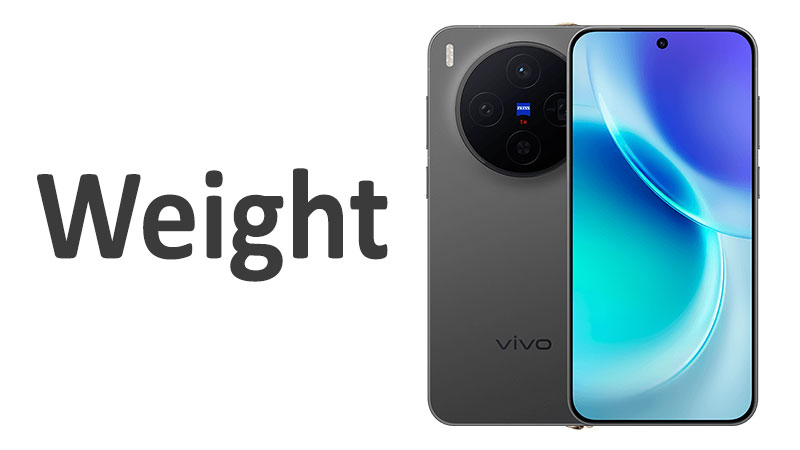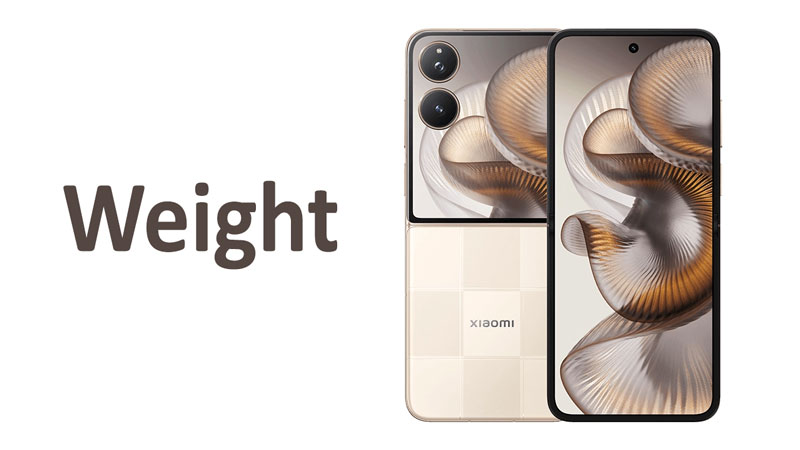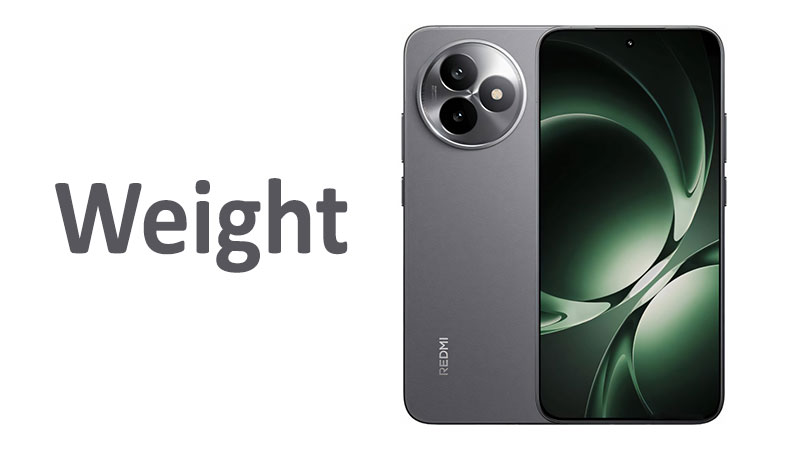The vivo X300 Weight specification is a critical element of its design and user experience. The phone weighs exactly 190 g, or 6.70 oz. This weight places it strategically within the flagship smartphone category. It achieves an optimal balance between premium materials and daily comfort. The mass of a phone directly influences how it feels in the hand. It affects fatigue during long usage sessions. Furthermore, the weight is intrinsically linked to the build quality. A moderate weight often suggests the inclusion of high-quality components. We will explore the significance of this 190 g figure in detail. This comprehensive analysis will cover ergonomics, comparisons, and internal engineering choices.
The 190 g Benchmark: Details and Significance
The 190 g weight is the numerical representation of the X300’s physical mass. This translates directly to 6.70 oz in imperial units. This specific number is not arbitrary. It represents a calculated choice by the engineering team. The goal was to ensure the phone feels substantial but never cumbersome. A very light phone can feel cheap or plastic. A very heavy phone can cause strain during extended use.
190 g sits at the boundary between moderate and lightweight flagships. Given the phone’s compact size (6.31 inches screen), this weight indicates dense internal packing. It suggests the use of sturdy metal alloys in the frame. It also implies a high-capacity battery is present. Achieving this weight requires careful material selection. This is especially true for the glass and metal components.
This weight class offers a tactile confirmation of the phone’s premium status. When you hold the X300, it feels solid and well-built. This sensation enhances the overall user perception of quality. The density of the device is perhaps more important than the weight itself. The weight is distributed evenly across the phone’s compact body. This careful balance prevents the phone from feeling top or bottom heavy.
Ergonomics and Hand Feel at 190 g![]()
Weight plays a pivotal role in the phone’s ergonomics. The 190 g mass contributes to a secure, comfortable grip. This is especially true given the X300’s narrow 71.9 mm width. The phone does not feel light enough to be flimsy. It is not heavy enough to be fatiguing. This sweet spot prevents common handling issues.
Extended one-handed use benefits greatly from this moderate weight. Users often spend hours scrolling through content or holding video calls. A phone weighing 220 g or more quickly causes hand fatigue. The X300’s 190 g weight minimizes this strain effectively. It allows for longer, more comfortable periods of interaction. This is a significant advantage for users prioritizing portability.
The phone’s weight affects pocketability too. A phone that is too light can be easily forgotten in a pocket. A moderate weight offers reassurance of its presence. The compact dimensions (150.6 mm height) couple well with this mass. The overall package is designed for ease of daily carry. This combination is highly desirable for the compact segment of the market.
Specialized Comparison: X300 vs. X300 Pro Weight
The weight difference between the base X300 and the Pro model is important. The larger X300 Pro likely weighs substantially more. We can estimate the Pro model’s weight to be around 215 g. This estimation is based on its larger 6.78 inch screen and enhanced camera systems. Therefore, the base X300 is significantly lighter by approximately 25 g.
This 25 g difference represents the size trade-off. The X300 is clearly the lighter, more comfortable option for daily use. The Pro model includes extra hardware like a larger battery and more complex cameras. These additions invariably increase its total mass. Buyers must decide if the larger screen and camera are worth the extra 25 g of daily carry weight.
The 190 g weight of the X300 makes it the portability champion of the series. The X300 Pro is aimed at power users who accept the increased weight. This comparison highlights vivo’s strategy. They offer two distinct ergonomic experiences to cater to different user needs. The base X300 targets the comfort-conscious flagship buyer.
Specialized Comparison: X300 vs. Key Competitors
Comparing the 190 g X300 to rivals reveals its strategic position. Most larger flagships, those exceeding 6.7 inches, easily top 205 g. Many reach 225 g or even higher, especially those with titanium frames. The X300 is considerably lighter than these devices. This difference is immediately noticeable when held side-by-side.
Some smaller, ultra-compact rivals might weigh less, perhaps 175 g. However, those phones usually feature smaller batteries or less robust internal cooling. The 190 g weight suggests the X300 did not compromise on essential flagship hardware. It retains a large battery capacity and a sophisticated cooling system. This weight confirms the X300’s balanced component approach.
The 190 g mass is a competitive advantage in the compact category. It offers premium feel without the heavy burden of the ultra-flagships. Consumers often search for the lightest phone in the flagship tier. The X300 successfully positions itself as a lightweight premium contender. This is a crucial distinction in the highly competitive market.
Pros and Cons of the 190 g Weight Class
The advantages of the 190 g weight are numerous and significant. First, the reduced hand fatigue during prolonged use is a major pro. Second, the improved portability and ease of pocket carry are strong selling points. Third, the weight provides a reassuring sense of density and build quality. This prevents the phone from feeling delicate or hollow.
The weight also benefits physical activities. The phone feels less intrusive when running or exercising. It reduces strain on clothing when carried in lighter fabrics. This moderate mass enhances the overall daily convenience factor. The X300 is engineered for continuous and comfortable interaction.
The disadvantages are very few at this weight level. A slightly heavier phone might offer an even larger battery. However, the 190 g already accommodates a high-capacity unit. The use of aluminum and glass contributes to this mass. Using a very heavy protective case could push the total weight over 220 g. This would negate the phone’s inherent lightweight advantage significantly. Buyers should choose slim cases to maintain the light feel.
Weight Distribution and Balance
Weight distribution is as important as the total weight itself. The X300’s engineers paid close attention to balancing the 190 g mass. The center of gravity appears to be slightly below the physical center of the phone. This design choice aids handling security. It makes the phone feel grounded in the user’s palm.
Poor weight distribution can make a 190 g phone feel much heavier. If the mass is concentrated at the top, the phone becomes top-heavy. This creates a tilting sensation. It requires extra grip effort to prevent drops. The X300 avoids this common issue through careful component placement. The battery and cooling system are positioned lower in the chassis.
This superior balance is especially important for photo and video capture. A well-balanced phone is easier to hold steady for long exposures. The stable feel contributes to better overall image quality. The internal design ensures that the weight enhances, rather than detracts from, the user experience. The 190 g is spread harmoniously across the phone’s compact frame.
Weight and Build Materials
The 190 g weight is a direct result of the materials chosen for the build. The X300 likely uses an aerospace-grade aluminum alloy for its frame. Aluminum is strong and light, offering excellent structural rigidity. The front and back panels use a premium protective glass. Glass is denser than plastic, which contributes to the overall weight.
Using metal and glass ensures the phone achieves its premium feel. A phone made primarily of plastic would be significantly lighter. It would also feel less luxurious and potentially less durable. The 190 g confirms the use of these high-end materials. It is the signature of a true flagship device. The chosen materials also aid in thermal dissipation.
The glass panels may utilize specialized treatments like fluorite anti-glare etching. This finish affects the tactile feel but does not significantly alter the weight. The frame’s metal construction is essential for durability. It prevents bending and twisting under physical stress. The weight is a necessary consequence of selecting robust, high-quality components.
Weight and Internal Components
The internal components contribute significantly to the 190 g total weight. The battery is likely the single heaviest internal component. The compact chassis means the battery must be dense to maintain high capacity. The weight confirms the inclusion of a substantial power unit. This is vital for all-day usage performance.
The camera modules are the second major weight factor. The X300 features complex optics and stabilization hardware. The periscope zoom lens, for instance, adds considerable mass. Engineers carefully designed the module to minimize its weight. The compact size of the phone limits the size of these heavy components. This helps keep the final weight at a comfortable 190 g.
The cooling system also adds mass. The X300 employs a large vapor chamber or advanced heat pipe system. This metal-based hardware is essential for managing the high-performance chipset. All these necessary flagship features combine to produce the 190 g final figure. The weight is a reflection of the phone’s powerful internal technology.
Weight Density: A Key Metric
Weight density is a crucial concept when analyzing phone size and mass. Density is the total weight divided by the total volume. The X300 is a compact phone at 150.6×71.9×8 mm. This smaller volume means the 190 g is packed more tightly. The X300 is a highly dense device. This high density contributes directly to its solid, premium feel.
A less dense phone, even if it weighs the same, might feel hollow. A phone with a larger volume but the same 190 g weight would be less dense. It would lack the desirable robustness that users expect from a flagship. The X300’s high density provides a satisfying heft without the burden of excessive mass. The premium feel is not just about weight, but about how that weight is concentrated.
The perceived quality often scales with density. The 190 g weight, coupled with the compact body, creates a high-density feel. This ensures the phone feels like a well-machined piece of technology. This is a critical psychological factor for premium device users. The X300 manages to convey both robustness and lightness successfully.
Important Buyer Knowledge
Potential buyers must consider how the 190 g weight will evolve. Adding a robust protective case is highly recommended for drop protection. A typical tough case can add 30 g to 50 g to the total mass. This could push the daily carry weight up to 220 g or more. Users prioritizing lightness should choose ultra-slim or lightweight carbon fiber cases.
Another factor is long-term comfort. If you have wrist or hand sensitivity, the 190 g mass is a major advantage. It is significantly lighter than the ultra-premium or foldable devices. These heavy phones can easily exceed 250 g in total. The X300 minimizes the risk of long-term discomfort and strain.
Finally, consider the weight in conjunction with the phone’s thickness. The X300 is a slim 8 mm device. A thin phone with moderate weight feels balanced and less intrusive. A thick phone, even at the same weight, often feels heavier and bulkier. The 190 g weight is optimized for the X300’s sleek, slim profile.
Conclusion: An Informed Decision on the X300 Weight
The vivo X300 Weight of 190 g (6.70 oz) is a masterclass in compromise. This specific mass represents a careful balance of durability, battery life, and comfort. The weight is light enough to avoid hand fatigue during long usage sessions. It is substantial enough to convey premium build quality and high-density components.
The X300 is significantly lighter than its larger X300 Pro sibling. It is also lighter than most competing flagships with larger screens. This makes it the superior choice for users prioritizing portability and one-handed comfort. The weight confirms the use of premium metal and glass materials throughout the construction.
The decision for buyers is clear. If you seek a lightweight phone that still feels robust and powerful, the X300 is the ideal choice. Its 190 g mass provides a perfect blend of high-end features and ergonomic excellence. This phone delivers a flagship experience without the cumbersome weight often associated with top-tier devices.
Frequently Asked Questions (FAQ)
1. What is the exact weight of the vivo X300?
The vivo X300 weighs exactly 190 g, which is equivalent to 6.70 oz.
2. Is the 190 g weight considered heavy for a modern phone?
No, 190 g is considered a moderate to light weight for a flagship smartphone in the current market.
3. How does the X300’s weight compare to the X300 Pro?
The base X300 is substantially lighter than the X300 Pro. The Pro model is estimated to weigh around 215 g.
4. Why does the X300 weigh 190 g despite its compact size?
The weight is due to its premium materials, including the metal frame and glass back. It also has a high-capacity battery and advanced camera hardware.
5. Does adding a case significantly increase the phone’s weight?
Yes, a protective case can add 30 g or more. This could push the total daily carry weight over 220 g.



